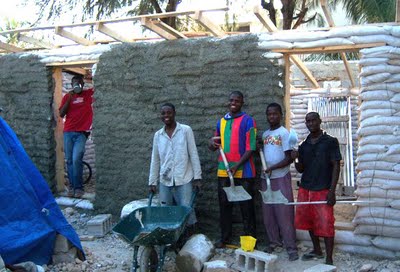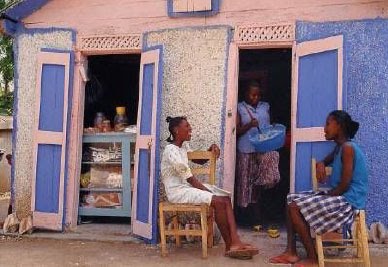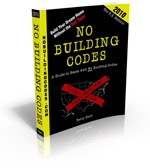Guest blogger, Dan Grifen, has written the following:
The world is in a constant state of flux and the environment is no different. Lately, it seems as though flash flooding, earthquakes, and hurricanes are occurring all too often. The severity of them is seemingly unprecedented. Additionally, cities like Washington, D.C. - normally accustomed to mild winters - are experiencing record snow fall while those that expect heavy precipitation, like Syracuse, NY, are setting records for not having any of it. While this may or may not have anything to do with global warming, it certainly is a reminder that the environment is capable of a lot of unexpected changes and we should be doing what we can to balance our use of natural resources and minimize our carbon footprint. Otherwise, the odd, eyebrow-raising nature of weather patterns we’re currently experiencing may end up being catastrophic events down the road.
Yet, what can be done that isn’t currently being done? Cutting down on carbon emissions and recycling have been at the forefronts of the go green movement. However, some initiatives that target a completely new, green infrastructure have gone unnoticed but are essential to competitiveness, long term sustainability, job growth, energy independence and national security.
According to the
Department of Energy, heating and cooling account for 50 to 70% of the energy used in the average American home. A large proportion of energy is lost through cracks in walls and ceilings. In terms of energy conservation, individuals can make immediate improvements to their energy profile simply by adding insulation to their home. Arguably, the best insulation for any green home is Cellulose which, according to the
U.S. Green Building Council, requires less energy to make and is made of 75% recycled material. This is great for air quality in the home and also for the environment. There’s also renewable Cotton, abundant Fiberglass, and even Soy based foam insulation, which has the highest percentage of renewable resource ingredients in the industry with 60%. By doing this, any homeowner can add value to their home while conserving energy and reducing their utility bill. Long term savings outweigh upfront costs. The implementation of
Smart Meters can help them find other areas of their home where energy can be used more efficiently. In some locations, local governments are providing residents with them for free. This seems to be the best strategy for getting residents the tools necessary to cut energy costs. The theory suggests that consumers will make necessary changes to their energy consumption if they can actually see exactly where it is being used inefficiently.
Aside from individual efforts, there are a lot of groups and organizations that people can get involved with that tackle larger projects. The
University-National Park Energy Partnership Program (UNPEPP) is a great example. UNPEPP is a public private partnership (PPP) that puts federal grant money in the hands of young, impressionable university students eager to change the United States landscape one national park at a time. Universities all across America use the federal grant money to create internship opportunities for students to travel to a national park in their area and work with energy and environmental professors, experts and park personnel to perform energy audits, recommend energy conservation measures and implement renewable energy technology (RET) that ultimately save the parks thousands in energy costs and significantly reduce their carbon footprint. The
UNPEPP 10 year Report is posted on the website. This type of partnership is a rewarding experience for everyone involved and similar PPPs should be on the forefront of the green energy movement.
A third component of building the green energy infrastructure involves business owners. While individual efforts generally result in relatively smaller improvements and PPPs sometimes get delayed by energy policies hung up by the legislative process, private businesses march to the beat of their own drum. They are in a position to tackle large scale projects that can create a large impact without delay. A lot of businesses see the potential for going green. Many of them have come on board. There is actually a scoring system that was devised in 1998, called
LEED Certification to help gauge just how far a company has gone to incorporate green initiatives into their designs. Specifically, the Leadership in Energy and Environmental Design (LEED) Green Building Rating System provides a benchmark for the environmentally sustainable creation and use of buildings and neighborhoods. According to
USGBC, 72% of electricity consumption and 39% of energy use come from buildings in the United States alone. LEED certified buildings use efficient resources to improve performance with energy conservation, CO2 emissions reduction, and water efficiency all while enhancing the ecosystems they are a part of - rather than diminishing them.
One major company,
Globetrotters Engineering Corporation (GEC), an architectural company founded by engineer and CEO,
Niranjan Shah, is an example of a company that adheres to LEED certification. GEC is responsible for the management of many facets of modernization and expansion of O’Hare International Airport in Chicago (the first privately managed terminal in the United States).
Niranjan Shah proved that implementation of green design can be successful, helpful to society and profitable all at the same time. An example of another company that earned LEED Certification is the Washington D.C. based mortgage company, Fannie Mae, which was responsible for the first-ever LEED data center. There are countless other companies that are earning LEED certification. Government incentives given to companies that earn LEED certification is a way to boost the number of participants and achieve the environmental sustainability results that environmentally friendly federal energy policies target but can’t necessarily get passed through legislation.
On a much larger scale, organizations like the
Clinton Global Initiative (CGI), founded by Bill Clinton and counselor
Doug Band, are doing their part to bring the strongest political leaders together to tackle world problems. However, small projects at home, public private partnerships and LEED certification are methods that combine to allow everyone a chance to get involved to curtail inefficient energy use. The necessity to highlight them cannot be understated. The planet is home to all of us and the best way to ensure sustainability is to live and work as environmentally friendly as possible.






